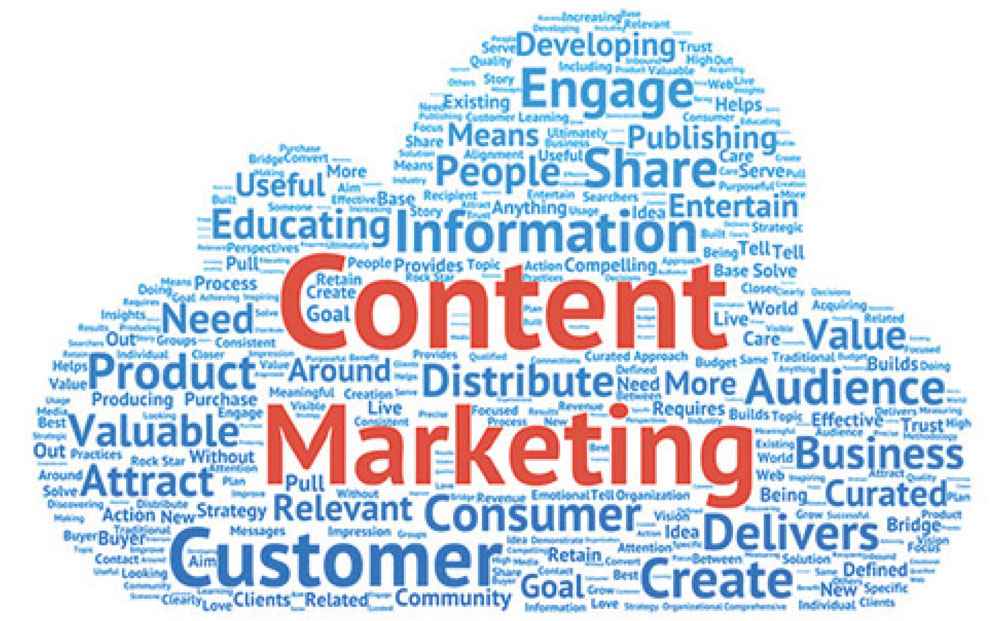What is Content Marketing?
Content marketing is a strategic way of marketing that involves creating and sharing useful content consistently. Its goal is to attract and keep specific audiences engaged, leading to actions that benefit the business. The approach of content marketing does not pitch products or services but is based on relevant, useful, informative, and educational content that ensures it either educates, entertains, or solves problems for a target audience. It is an effort oriented to the building of trust and establishment of authority within the sector with whom long-term relations can be built, thereby increasing the chance to interact with customers and positivity in making purchases.
Let’s Begin….
The vast digital landscape has given rise to content marketing as an important strategy for companies looking to engage their target market, develop customer loyalty, and increase sales. At its core is the ability to create valuable content that not only attracts attention but also provides real benefits. This blog will look at what is involved in the content marketing process and give some tips for creating engaging content. Comprehension of the Importance of Significant Content It is necessary to understand that valuable content is not merely eloquently stated information with good graphics; it serves the audience’s needs, pain points, and preferences. This implies that it can inform, educate, or entertain. Therefore, one may measure its worth based on how relevant or useful it is in representing what would be considered (by someone else) as life-enhancing messages.
Relevance: The information should be relevant to the interests and needs of your audience. The trick lies in knowing the demographics, preferences, and behaviors of your target audience. This can be derived from market research or customer feedback, where data patterns are Dover.
Utility: Useful information solves problems or gives insight – be it instructional, case study, or intensive analysis, the content has to leave your audience empowered with knowledge or skills that are actionable.
Impact: The content should move them to act or change something. This could be as simple as getting them to share on social media, make a comment, or drive them deeper into your website to learn more about your products.
How to Create Valuable Content
Creating valuable content requires a strategy that covers research, planning, creation, and distribution. Here’s a step-by-step guide to help you stand out in creating remarkable content:
Know Your Audience
Among the essential principles in creating valuable content is that you have to understand your audience. You cannot bang your head or force the relevance of your content to your audience if you don’t know who they are, what kind of pain points they are going through, or what interests and needs they have.
Define your audience personas: Start with extremely detailed audience personas. These are models of your ideal customers built from market research and data about existing customers. This includes details about demographic characteristics, behavioral patterns, motives, and goals.
Do Audience Research: It involves collecting information on your readers and follower base. This may involve the use of web analytics tools, surveys, and social media analytics. This will help one to know what kind of content they like more or which platform is best for them.
Engage with Your Audience: Share your expertise on social media, forums, and in the comment section of your blog. Physical interaction, of course, may give more resources than just these insights into preferences and concerns.

Create Good Quality Content
Second, once you have developed a sound understanding of your target audience, you would have to produce high-quality content that caters to their interests and fulfills their needs. Quality content should be informative, engaging, and relevant. Here are some tips for ensuring your content meets the criteria:
Focus on Value: The content needs to add real value to the audience; it can solve a problem, offer depth of information, or create a new insight. Do not create any content for the heck of it. An end goal needs to be attached to each piece of content.
Be Real: Audiences are more responsive towards authenticity. Be a little more real and less promotional with your content. Share your brand story, values, and mission. Authenticity breeds trust and credibility.
Format Variety: These will help accommodate different preferences and styles with respect to usage. Mix up your content on blogs, videos, infographics, podcasts, and social media posts. In this case, variety will help in keeping the audiences engaged, and you stand a chance of reaching more audiences.
Quality Check: Keep in mind that your writing, visuals, and overall presentation have to be at par with the best. Badly written content or poor-quality visuals can be detrimental to your brand reputation. Invest in good writers, designers, and video producers if needed.
SEO Optimization
It is also very important that content marketing gives SEO due relevance, for it facilitates the findability of the content by search engines – thereby driving organic traffic to a website. Next, here are some crucial SEO practices:
Keyword Research: Identify relevant keywords that your audience is searching for. Google Keyword Planner, SEMrush, or Ahrefs can be tools for help in finding keywords with optimum balance between search volume and competition.
On-Page Search Engine Optimization: Integrate keywords into the strategic content spots, such as the title, headings, meta descriptions, and throughout, in a manner that still sounds natural to your audience.
Quality Backlinks: These are from other reputable sites and will also help raise the credibility of your content, thus improving its search ranking. Target generating quality content others would want to link to, with guest posts on other reputable blogs within your niche.
Mobile Optimization: Ensure that the content is optimized for mobile devices. A good percentage of web traffic is still from mobile, so a mobile-friendly site is very important for both SEO and user experience.

Content Promotion
Creating great content is only half the job; it also needs to be promoted well. No matter how good one’s content might be, if not promoted it would simply lie there. So, here are some strategies to showcase your content to your readers properly.
Social media: Share your content across all your social media channels. Craft the posts according to the different platforms and always add some eye-catching visuals along with captions.
Email Marketing: Send your content straight to people’s inboxes by using your email list. You should Thus, make one click through by writing a compelling subject line and having a view of what’s inside the content.
Influencer Partnerships: Partner with industry-specific influencers to share your content. Influencers help you extend your reach to large audiences. Moreover, it adds credibility to your content.
Paid Advertising: Paid advertisements will give you a little momentum in your content visibility. Both Facebook and Instagram, as well as Google Ads, give one the possibility of targeting advertising so that you might get your ideal audience.
Measure Success
You’ve finally got to measure the success of your content marketing efforts. If you do not keep track of your performance, then you will not know what’s working and what you need to improve. The following are metrics worth watching:
Engagement metrics: likes, shares, comments, and time spent on the page – the most common indicators that feature how well the audience is being engaged with the content.
Traffic metrics: Monitor website traffic and note the number of page views and unique visitors to see just how much, in terms of visitors, your content attracts to your site.
Conversion metrics: Track form submissions, downloads, purchases, or any other conversions of interest as a way to know who has converted through the content.
SEO Metrics: Keyword rankings, organic traffic, and backlinks to your content must be measured for the evaluation of SEO performance.

Examples of Valuable Content
Let me give You Some examples to get across the idea of what really is valuable content: with the help of live examples that various companies have implemented
1. Spotify Wrapped Playlists
Spotify Wrapped is one of the app’s best marketing campaigns. Every year, near the end, Spotify gives users a fun summary of all the music they listened to that year. This summary includes details like genres, years, and artists, all shown with bright, colorful graphics.
It also makes a playlist of the user’s favorite songs from the year. Users can share this playlist on social media, which is a big reason why the campaign is so popular online every year.
2. Canva’s Design School
Canva’s Design School helps users learn to make eye-catching images easily, even if they’re new to design and don’t use complex software. It showcases all the creative options Canva provides for designing.
3. Crunchyroll Collections
Crunchyroll, a U.S. company, streams anime globally by licensing and distributing it. To reach fans, Crunchyroll uses its YouTube channel, Crunchyroll Collections. This channel shares clips and compilations of favorite moments from popular anime, attracting viewers online.
This content marketing strategy attracts viewers, helps the brand stay visible in top search results for popular anime, and demonstrates the wide range of shows available. It encourages viewers to subscribe to their streaming service.
Conclusion:
Once businesses plan and know clearly who exactly they deal with, creating content would be exceedingly valuable. Assist your audience to put up a loyal following on all channels and drive meaningful engagement; frequently create high-quality, relevant, and useful content. Valuable content is that which has info, inspiration, and a positive impact on the audience. Keep improving your methods, and with a feel of the audience’s pulse, the returns of all your content marketing efforts will pay overwhelmingly.
Article Credit- Karthik Nair, Student of Advanced Digital Marketing Course.









